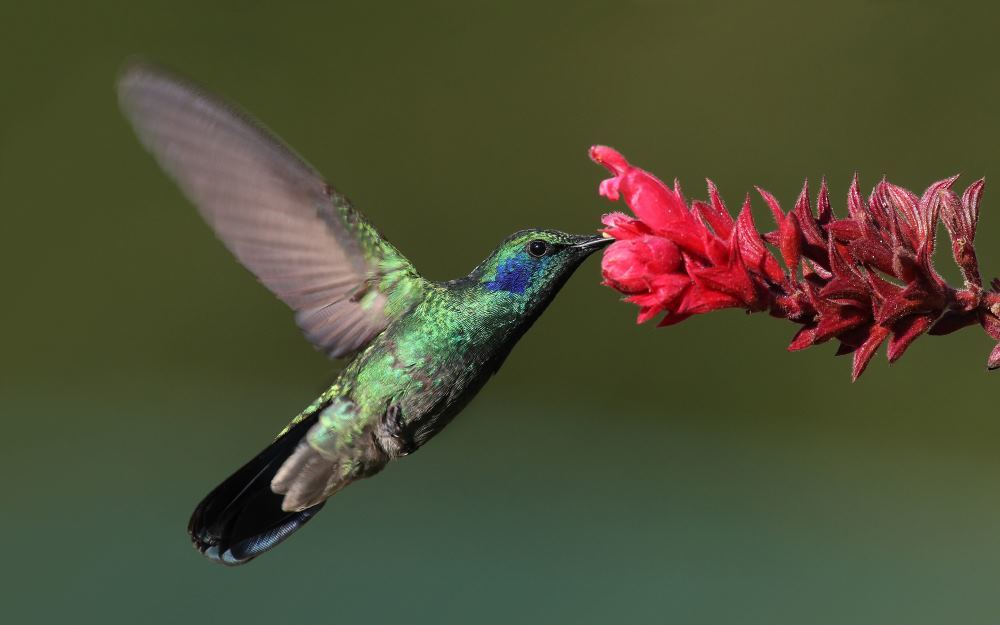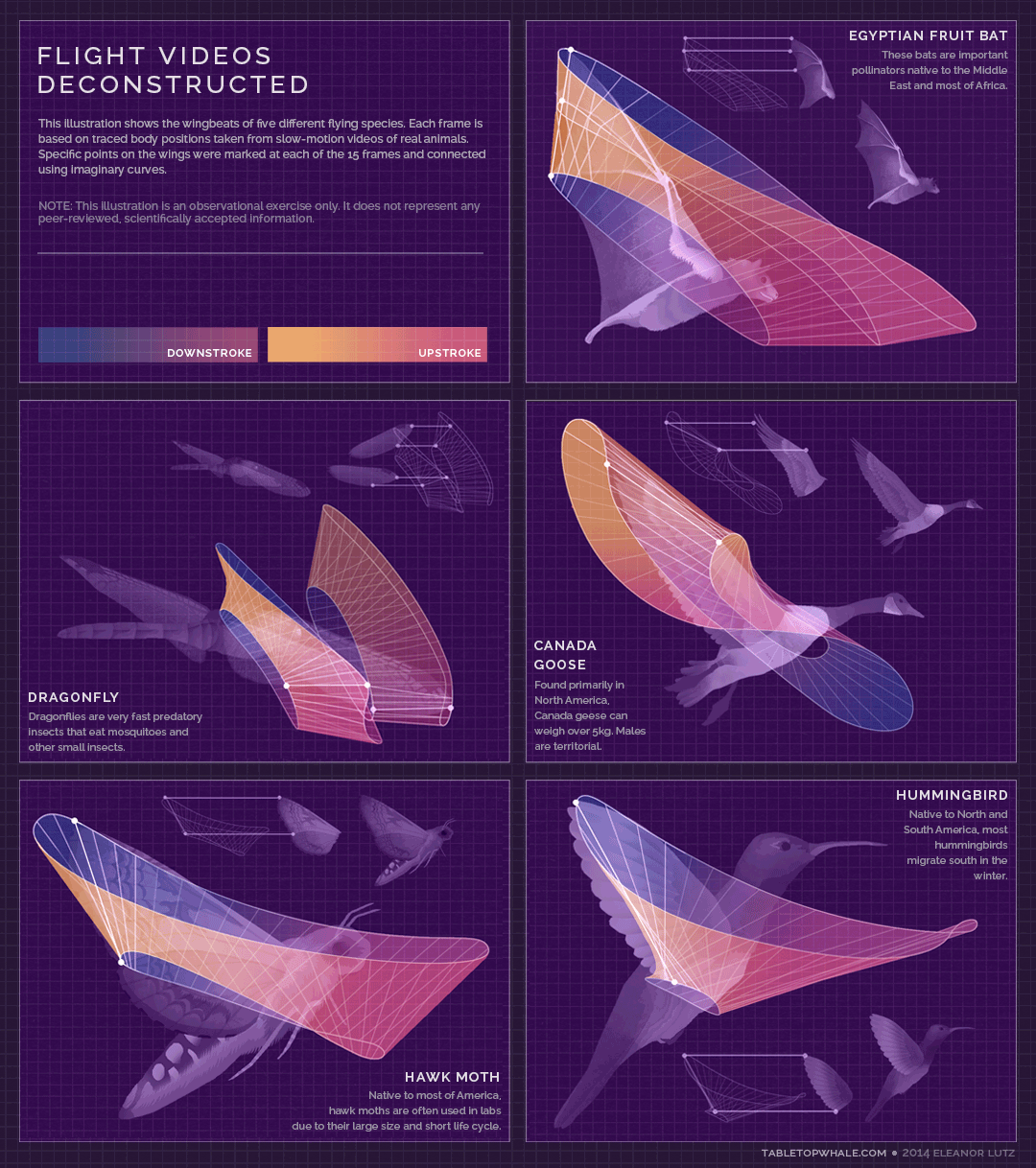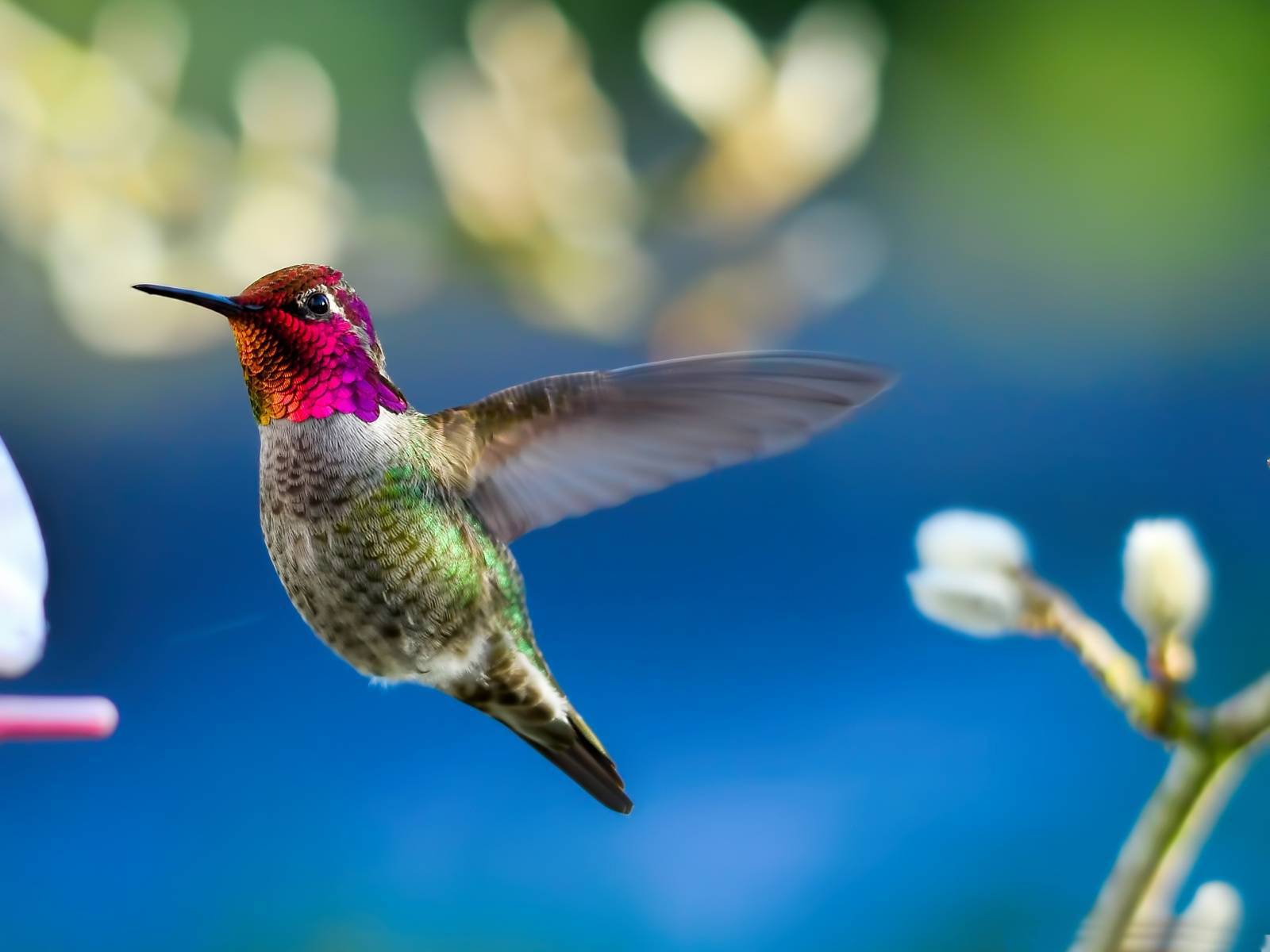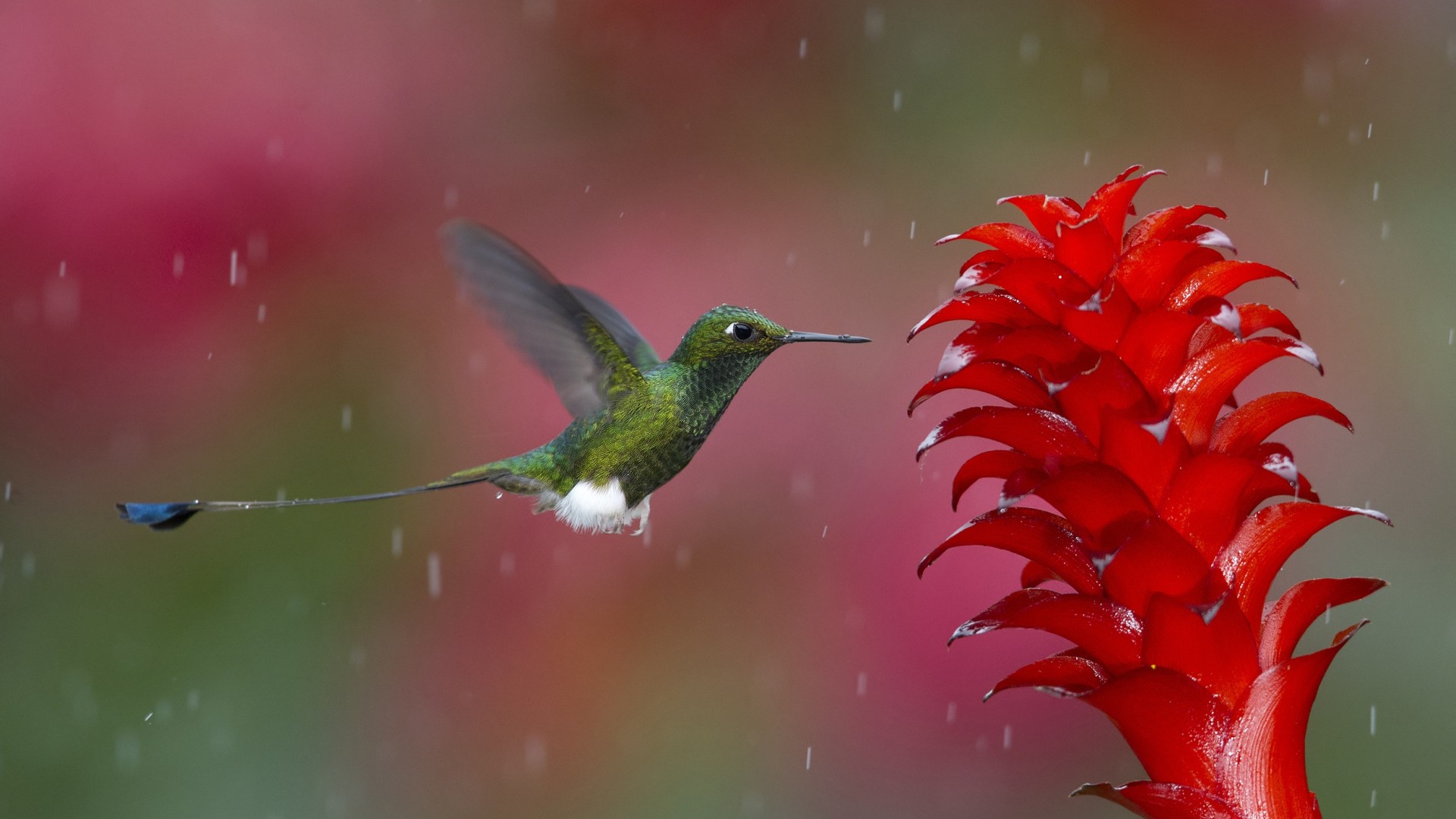Physics in the animal world: hummingbirds and its flight

Hummingbirds are small-sized birds that live in both North and South America. There are 330 species of hummingbirds, and the vast majority are brightly colored birds of very small size. Weighing hummingbirds is just a few grams. The maximum size of one type of hummingbird is almost equal to the size of a common starling. The smallest hummingbird weighs 2 grams, the length of its body is only a few centimeters.
Hummingbirds are remarkable not only in size. The fact is that these birds are masters of high class flight. They can fly in almost any direction, hover in the air, make a vertical take-off and landing. Some other birds may hang in place, but hummingbirds outnumber all other species, stopping in one place for a long time and without visible effort.
During the “flight on the spot”, the hummingbird has to draw out a figure of eight wings. Due to this, the bird is held upright in the air. The speed of the wings of the hummingbird is huge - about 50-80 strokes per second. But this is not the limit. While caring for a female, a male of one type of hummingbird makes over 200 strokes per second. Acceleration to maximum speed and instantaneous stopping of these birds occurs almost instantly, in just a few seconds. The speed of a small bird reaches 50 km / h, which is really a lot for such a small creature.
')
According to Douglas Warrick of the University of Oregon ( Oregon State University ), hummingbirds use a flight style that is intermediate between the style of birds and the style of insects. During the flight, these animals get about 25% of the lift from the movement of the wings up and 75% from the movement down. In insects, the situation is somewhat different: the movement of the wings up and down the body receives about 50% of the lifting force. In most birds, the body receives lift mainly from the movement of the wings down.

Christopher Clark of the University of California, using a high-speed camera, captured the moment the hummingbird entered the peak. The calculations showed that hummingbirds reach speeds of about 400 shells per second. This is more than that of the fighter jet involved in the afterburner or at the shuttle that enters the Earth’s atmosphere. Despite the speed, hummingbirds and brake almost instantly, as already mentioned. So very few organisms capable of flying can stop the movement.
Hummingbirds excel in the art of flying the vast majority of birds. And the structure of the body, the structure of their wings is different from all other birds. In order to be able to flap their wings so quickly, hummingbirds should have short and straight bones of the shoulder and forearm. The bones of the wings are strong and light due to the fact that they are hollow. The structure of the wing itself is very rigid due to the fact that a number of joints simply do not move.

Shoulder joints are flexible. Thanks to this they can move in any direction. They can also rotate about 180 degrees. Plus, hummingbirds can change the angle of the wing to change the trajectory of movement. A very small number of bird species is capable of this. In addition to bones, there must be powerful muscles. Hummingbirds have a wing muscle mass of about 40% of the total body weight.
In order to provide muscles with oxygen during work, oxygen is also needed. His hummingbirds are obtained thanks to a developed respiratory system, which includes 9 air bags. They form a single system with lungs. During movement, the muscles push the air out of these sacs, thanks to which the lungs receive additional portions of oxygen.
Providing oxygen to the entire body is not an easy task. But it copes with a large heart, which occupies about half the body of a bird. It pumps blood, providing oxygen to all the hummingbird tissues and organs. The heart rate in the case of hummingbirds is 500 beats per minute at rest. During flight, the pulse of a bird accelerates up to 1200 beats per minute. Breathing is also very fast - up to 600 breath-breathing cycles per minute.

For such an active work and nutrients are needed. Most hummingbirds get enough energy from nectar - a very high-calorie substance that is almost instantly processed by the poultry's digestive system. During the day, a number of species of medium-sized hummingbirds that feed on nectar consume twice as much food as they weigh. Almost all the energy is spent on the flight. In the active state, the hummingbird's body heats up to about 42 ° C. At night, the temperature drops to 15-22 ° C. Very few warm-blooded animals are able to survive with such an abrupt change in body temperature.
Hummingbirds use their long beak to reach the right amount of food, which can penetrate deep into a cup of flower. Some species of hummingbirds are even more original, piercing the base of the flower with their beak if they cannot get to nectar in the usual way. For the extraction of nectar is used and a long tongue that has a special form. This form helps nectar stay in the language at a time when hummingbirds decided to eat.

Nectar is captured by the tongue and, due to the shape of the tongue, enters the throat. To provide your body with enough energy, a number of species of hummingbirds must eat very often - every 10-20 minutes. Birds can fly in the rain - it is necessary for their survival. If hummingbirds could not fly in the rain, it would endanger the survival of a number of species.
Hummingbirds are also surprised by the fact that they are able to fly over very long distances. For example, a ruby-throated hummingbird flies from Canada to Mexico and Panama for the winter. The distance of the flight is 5000 kilometers. The average flight speed is about 50 kilometers per hour. Not all large birds are able to withstand such a long and exhausting flight, not to mention the small birds.
Scientists say that hummingbirds are just made for flight. It is hardly an exaggeration to say that hummingbirds are the best flyers in the world.
Source: https://habr.com/ru/post/372677/
All Articles